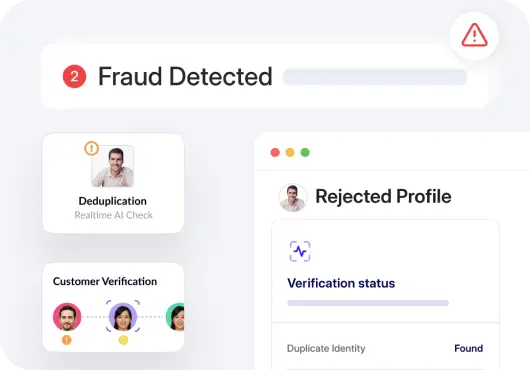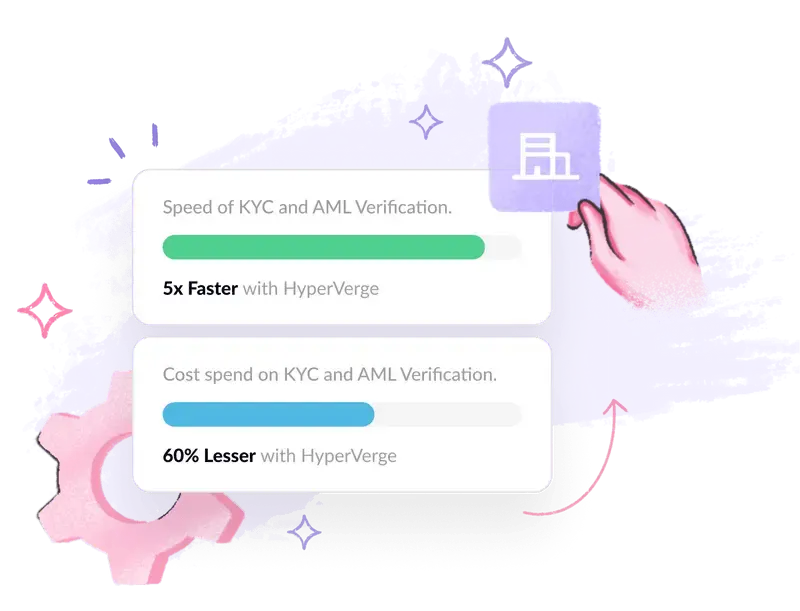What Is Customer Remediation? Mending Fences and Building Trust
A major retail bank discovered a software glitch in its mobile banking app (one that went unnoticed for six months). During this time, international wire transfers were incorrectly processed, leading to thousands of customers being overcharged on foreign exchange fees. Naturally, frustration followed.
But the impact didn’t stop there. Regulatory fines loomed, customer trust took a hit, and long-term reputational damage became a real concern.
How can a bank recover from such a situation and prevent it from escalating further?
The answer lies in a well-structured customer remediation framework.
In this article, we’ll break down customer remediation meaning, why it matters, and how financial institutions can implement a robust strategy to restore trust and compliance.
Customer remediation is the process of how financial institutions identify, address, and compensate customers for errors, misconduct, or regulatory breaches that have negatively impacted them.
The process typically includes:
- Investigating the root cause of the issue
- Communicating transparently with affected customers
- Offering fair compensation for any losses
- Implementing measures to prevent future occurrences
Effective customer remediation programs aim to rebuild trust, ensure compliance with regulations, and protect the institution’s reputation.
A successful customer remediation program comprises five critical components: identification, investigation, communication, compensation, and prevention.
Let’s explore each of these elements in detail.
1. Identification
Identification is the first step in a remediation program. It involves recognizing problems that impact customers. Early identification helps minimize the impact on customers and allows institutions to respond quickly.
How to do it
- Ongoing monitoring: Use technology to track unusual activities or errors in customer accounts.
- Gather feedback: Encourage customers to report issues through surveys, hotlines, or online platforms.
- Analyze data: Review customer complaints regularly and operational data to spot trends or recurring problems.
2. Investigation
Investigation involves digging deeper into the identified issues to understand their root causes. Thorough investigations help institutions understand what went wrong and prevent similar issues in the future.
How to do it
- Assemble a team: Create a dedicated team of experts from various departments (compliance, operations, IT) to investigate issues.
- Collect evidence: Gather relevant data, documents, and customer communications related to the issue.
- Conduct interviews: Speak with affected customers and staff involved in the process to gain insights.
3. Communication
Effective communication ensures that customers know what happened and what steps the institution is taking to resolve the issue. Good communication builds customer trust and demonstrates that the institution values their concerns.
How to do it
- Be transparent: Provide clear and honest information about the issue and its impact on customers.
- Use multiple channels: Communicate through emails, phone calls, social media, and website updates to reach all affected customers.
- Set expectations: Inform customers in a timely manner about the resolution and any actions they need to take.
4. Compensation
Compensation involves restitution to affected customers for any losses or inconveniences they experience. Fair compensation shows customers that the institution takes responsibility for its mistakes and cares about their experience.
How to do it
- Risk assessment: Evaluate how the issue affected each customer individually.
- Offer fair solutions: Provide appropriate compensation options, such as refunds, credits, or other forms of restitution.
- Make it simple: Ensure that the compensation process is easy for customers to navigate.
5. Prevention
Prevention focuses on implementing changes to avoid similar issues in the future. Proactive prevention reduces the likelihood of future problems, enhancing overall customer satisfaction and loyalty.
How to do it
- Review policies and procedures: Regularly assess and update internal processes as needed.
- Provide training: Educate staff on best practices for positive customer outcomes.
- Invest in technology: Utilize advanced systems for continuous monitoring of transactions.
While customer remediation isn’t limited to the financial sector, it’s most commonly associated with banks, fintech companies, and financial services firms. Let’s understand why customer remediation is significant for financial institutions.
1. Regulatory compliance
Regulatory compliance is one of the most important reasons for a strong customer remediation program. Financial institutions are required to follow strict guidelines set by bodies like the Consumer Financial Protection Bureau (CFPB). In fact, the CFPB’s recent report highlighted that over 195 million people were eligible for consumer relief with penalties reaching $5 billion and compensation reaching $19.5 billion.
With a solid remediation process, financial institutions can address systemic issues like incorrect fees or misapplied policies and avoid hefty fines and legal consequences.
2. Reputation management
When it comes to financial institutions, reputation matters. A publicized error, like a billing mistake or service failure, can have significant financial and reputational impacts.
Karen Chester, Deputy at the Australian Securities and Investments Commission (ASIC), emphasized that poor service or misconduct can damage a company’s reputation, leading to remediation costs and long-term trust issues.
Financial institutions can quickly address problems and protect their reputation by having a proactive remediation strategy, ensuring customers remain confident in their services.
3. Customer retention
When a bank or insurance company addresses customer complaints quickly and fairly, it goes a long way in building loyalty. Financial institutions with efficient and effective remediation processes are likelier to keep their customers satisfied and engaged.
A solid remediation effort signals customers that the organization is committed to making things right. This approach also attracts new ones who seek reliable financial partners.
4. Competitive advantage
As customers become more discerning about their choices, institutions that excel in remediation can stand out by offering superior customer service. In an industry where many institutions offer similar products and services, exceptional customer experience can set you apart. Institutions that prioritize swift remediation can market themselves as customer-centric organizations.
According to EY insights, a carefully designed workflow for performing KYC automation can help manage costs and improve customer experience. This further translates into operational excellence and long-term advantage.
Customer remediation is crucial across various industries. However, certain sectors, like financial services, fintech, cryptocurrency, and gaming, face unique challenges that make remediation even more vital.
Financial services
For many financial institutions, Know Your Customer (KYC) and Anti-Money Laundering (AML) regulations issues are the most common triggers for customer remediation. These regulations require institutions to verify the identities of their clients and monitor transactions for suspicious activity.
In 2023, banks paid around $219 million for KYC non-compliance fines, globally.
Fintech
The fintech industry thrives on innovation. However, emerging technologies can also introduce new risks that require a strong focus on customer remediation. As fintech companies develop new products and services, they may encounter unforeseen issues related to security vulnerabilities or operational failures.
For example, a phishing attack could impact several customer accounts. Fast remediation helps fintech firms resolve such issues before they escalate into bigger crises.
Crypto & gaming
Market volatility and fraud risks make remediation strategies essential in cryptocurrency and gaming. In 2023, crypto-related fraud increased by 45% and exceeded $5.6 billion in losses. Gaming platforms often encounter issues like account hacks, fraudulent transactions, and payment disputes that require quick and effective remediation.
With fraud and security concerns on the rise, particularly in virtual economies and digital goods, a strong remediation process can go a long way toward protecting customers and maintaining trust in the platform.
Here’s how you can develop an effective remediation strategy.
1. Establish clear policies: Document step-by-step procedures for identifying, investigating, and resolving issues. Review and update these annually.
2. Train employees: Implement role-specific training programs focusing on empathy and effective communication. Use real-world scenarios to optimize learning.
3. Leverage technology: Invest in AI-powered analytics to identify patterns and automate initial customer outreach. Companies using AI for resolving issues report up to 90% faster resolution times.
4. Continuously improve: Conduct regular audits and solicit customer feedback. Aim for a Net Promoter Score (NPS) of 9-10%.
Financial institutions must ensure that their remediation efforts align with KYC (Know Your Customer) and AML (Anti-Money Laundering) regulations at each step.
Key factors for staying compliant during remediation include:
- Data breach notification laws often require specific timelines and methods of communication depending on the incident’s nature and jurisdiction. Financial institutions must ensure that they are following these laws to avoid penalties.
- To demonstrate compliance to regulators, firms must keep thorough records of the remediation process. This includes customer identity verification steps, communication logs, and compensation details.
- Remediation teams must work closely with compliance departments to ensure that processes like automated solutions or bulk payments do not unintentionally breach transaction monitoring thresholds or trigger suspicious activity reports.
A well-structured approach, backed by strong policies, procedures, and controls, ensures quick customer resolution and regulatory compliance.
Prioritizing customer satisfaction and building trust
Customer trust is the bedrock of every financial institution’s success. Proactive remediation helps you upkeep and restore this trust during errors or attacks.
Implementing adequate identity verification and AML checkpoints helps you prevent issues. An advanced KYC remediation process is essential for preventing issues that require remediation. Such tools ensure that financial institutions accurately identify their customers. With accurate document verification and real-time transaction monitoring for suspicious activities, these solutions help with risk management.
With robust video KYC solutions, HyperVerge helps fintech businesses avoid fraud and other risks. These solutions allow companies to assess their customers’ risks, correct discrepancies in customer data, and address potential compliance issues.
Schedule your demo to learn more. Improve your customer conversion and retention rates.
FAQs
Customer remediation is a structured process where companies identify and correct errors that negatively impact customers. It involves investigating the issue, determining affected customers, calculating financial impacts, developing compensation plans, communicating with customers, and implementing fixes to prevent future occurrences.
A customer remediation refund is a payment made by a company to customers to correct a mistake or overcharge in their products or services. It’s designed to compensate customers who were financially impacted by errors, system issues, or incorrect fees and restore their accounts to their correct position.
Customer identity remediation is correcting errors or inconsistencies in customer identification data across an organization’s systems. This includes updating, verifying, and standardizing personal information like names, addresses, and identification numbers to ensure accuracy and compliance with regulatory requirements.
Wells Fargo’s customer remediation involved compensating customers affected by various scandals, including the creation of unauthorized accounts and the charging of unnecessary insurance fees. The bank has paid billions in settlements and restitution to customers who were charged improper fees or given accounts without their consent between 2002 and 2016.
 Identity
Verification –
Onboard
users instantly across the globe with our high accuracy AI
models.
Identity
Verification –
Onboard
users instantly across the globe with our high accuracy AI
models. Video
KYC – Onboard
users remotely with very high confidence over video.
Video
KYC – Onboard
users remotely with very high confidence over video.
 Central
KYC – Reduce
processing time and eliminate manual KYC data entry.
Central
KYC – Reduce
processing time and eliminate manual KYC data entry.
 OCR
software –
Extract
data accurately from all global document formats.
OCR
software –
Extract
data accurately from all global document formats.
 Anti-Money
Laundering –
Simplify
AML compliance and protect your business
Anti-Money
Laundering –
Simplify
AML compliance and protect your business















